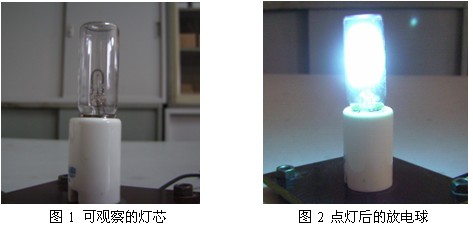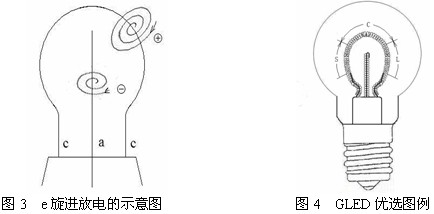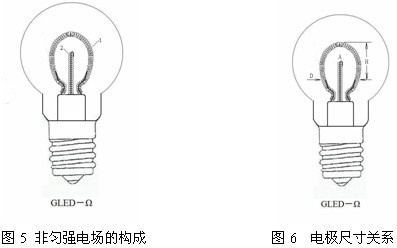First, the working mechanism:
The author accidentally discovered a seamless arc discharge ball in a comprehensive test of positive halo discharge and hollow cathode discharge. This fantastic arc-discharge ball is so strong and full of radiance, just like the candlelight of the year, the wick is small (Figure 1), but the flame is quite grand (Figure 2)!

How is this arc discharge ball excited in the GLED generated? What is the working mechanism of GLED? Related topics have caused the author to fall into the day and night to think about it. After a difficult discussion, the author has obtained an e-injection discharge theory that explains the arc discharge ball.
E-spinning discharge means that the electric field of the anode-to-cathode radiation state not only satisfies the conditions of positive-halo discharge and hollow cathode discharge, but also produces an unexpected e-dial discharge when the inter-electrode combination and electric field distribution of the GLED meet specific requirements. Effect.


The electrons are emitted from the hot spot at the top arc portion of the Ω-shaped cathode spiral. Due to the repulsive action of the nearby cathode, the electrons have a large angular momentum when leaving the hot spot, so that most of the electrons do not hit the anode immediately. And into the symmetrical logarithmic electric field established by the columnar anode and the Ω cathode (near the core side), continuously e-shaped spiral orbital motion, with a long mean free path (up to 10 meters). During the movement of electrons into the e-shaped spiral orbit, the mercury vapor is excited, the electrons also lose energy, the orbit is gradually reduced, and finally falls onto the columnar anode.
The mercury ions generated by the mercury vapor are excited by the non-uniform electric field, so that the mercury ions also have a large enough angular momentum, so that most of the mercury ions will not hit the hot spot immediately, but enter the columnar anode and Ω. In the fan-shaped radial electric field established by the cathode (away from the side of the stem), elliptical orbital motions of different sizes are continuously made with the focus of the hot spot (the long axis of the ellipse is outside the wick due to the repulsive action of the columnar anode on the mercury ion) , also has a long mean free path. During the elliptical orbital movement of mercury ions, mercury vapor is continuously excited and ionized, and a large number of mercury atoms are transitioned to emit ultraviolet rays to form an arc discharge ball. Mercury ions also lose energy due to constant excitation and transition, and the orbit is gradually reduced, and the e-shaped spiral orbital motion is also completed, and finally falls to the hot spot of the Ω cathode.
Due to the interaction between the plasmas (the same kind of particles repel each other, the heterogeneous particles attract each other), electrons and mercury ions have another e-shaped spiral orbital advancement at each instant of e-shaped spiral orbital discharge, ie e The precession motion is completed, thereby completing the e-spinning discharge, resulting in a seamless arc discharge ball!
2 process technology
The non-uniform electric field of GLED-Ω is composed of an Ω-shaped cathode spiral and a columnar anode that resides in the cavity. The utility model is characterized in that: the Ω shape of the cathode spiral is that the two ends of the tungsten spiral filament are firstly placed on the two inner length guide wires of the core post, and then the partial tungsten spiral filament and the truncated cathode inner guide wire are passed together. Mechanical method S-shaped clamping; columnar anode is located in the center of the inner cavity, for the different lamp power, the corresponding straight tungsten wire spiral can be set on the inner guide wire of the anode, and the straight tungsten wire spiral is fixed by the end hook of the inner guide wire of the anode (such as Figure 5).

The Ω shape of the GLED-Ω cathode filament is naturally formed by the elasticity of the spiral filament. Obviously, too long a filament will cause the cathode to sway, and too short will compress the arc ball. The process proposes a better range of the length of the Ω cathode filament, which is characterized in that the ratio of the total height H of the cathode filament Ω to the width D of the Ω opening must satisfy: 1.5 < H / D < 2.5. The end A of the columnar anode is preferably at the center of the top semicircle of the Ω cathode filament (Fig. 6).